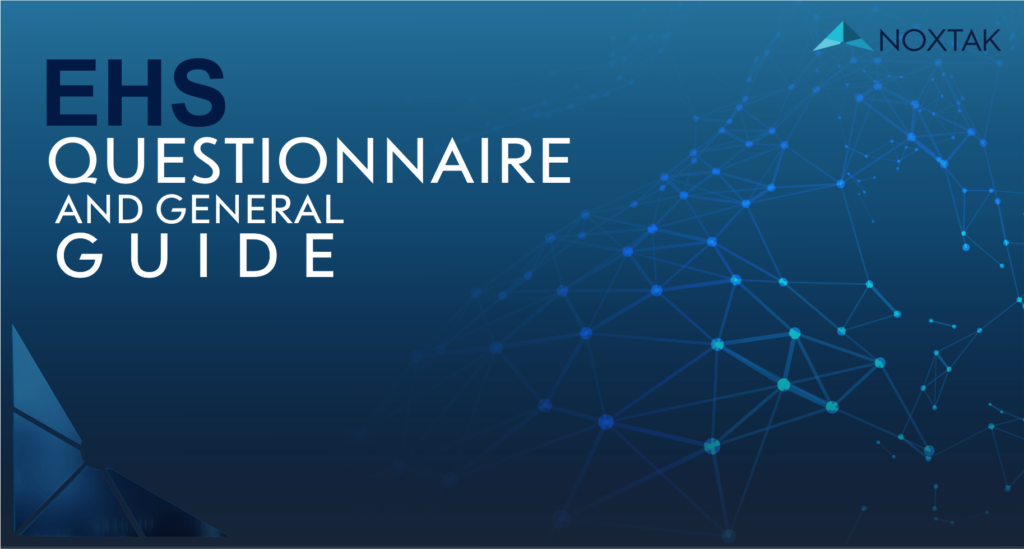
Some years ago, Noxtak launched an initiative to group the most common symptoms of EHS. Here we tell you what we have done and how.
EMC or Electrosmog contamination is a common and continuous aspect in our daily lives: it is in our homes, offices, parks, hospitals, schools, universities, theaters, cinemas, shopping malls and, practically, in all the places we frequent. All electronic and telecommunications equipment creates a pollution that has harmful influences on our health and our natural environment.
As a consequence of this exposure, health damage occurs slowly and you don’t even realize it. Keep in mind that these signals and fields are invisible to the human eye, also, their effects manifest just like the beginning of diseases that we already know. For this reason, many people do not relate these known symptoms with daily exposure to electromagnetic radiation.
We call this physical discomfort generated by EMFs electrohypersensitivity (EHS) (also known as electromagnetic hypersensitivity), an environmental pathology caused by exposure to electromagnetic fields from man-made artificial sources. Essentially, it is an Electrical Stress syndrome caused by the accumulation of electromagnetic charges.
To detect this syndrome and provide assistance to people who may suffer it, we have developed a material based on scientific foundations and several pieces of research that preceded us. Next, we will tell you more about the EHS questionnaire.
Where does the EHS questionnaire come from?
It took 30 years to reach a consensus in science on whether or not artificial fields and waves are harmful to human health. Today there is enough evidence of damage to achieve a scientific consensus. Since 2004, several studies have been released alerting society to this problem. In the same way, in 2011, the WHO concluded on the carcinogenic potential of RF (radiofrequency), as indicated in the 2012 Bioinitiative Report. In the following 2 years, 2012 and 2013, more than 1800 studies were published that support this new consensus.
With this in mind, Noxtak launched an initiative to develop a compendium of common EHS symptoms that could be easily identified, as well as their intensity levels, frequency of occurrence, and a preliminary examination. To build this material, we rely on various scientific investigations and the experience of several professionals from different areas of health.
For example, the Bioinitiative Report is a very famous report signed by various respected doctors and scientists around the world. Similarly, we draw on the studies of Prof. Olle Johansson of the Karolinska Institute in Sweden; and also in surveys carried out by the Dutch Federation of Electrohypersensitivity.
Initially, based on all the symptoms collected by associations of aid to electro-sensitive and electrohypersensitive people in Europe, the list grouped 45 symptoms. Then, we managed to group them by typology and arrived at 34 common symptoms. Today, with our experience and studies in hundreds of EHS cases, we bring the list to the 29 most common symptoms.
What is the questionnaire for?
As we have mentioned, people who suffer from EHS manifest multiple common symptoms without any type of health problem or without being under some type of medical treatment. It is important to highlight that EHS is not a disease, but a general discomfort reaction in a specific environment associated with high electromagnetic pollution (electrosmog).
With this in mind, we highlight that this questionnaire is not intended to diagnose a disease nor do we intend to provide medical treatment. The material is only intended to let you know that you might be exposed to high electromagnetic pollution in your environment that is physically affecting you.
This questionnaire is available for free to users around the world on our website in the following languages:
Why was the questionnaire created?
The protocol of patient surveys is commonly used in medicine as an exploratory method to locate in what range a person’s condition can be just by asking some specific questions. For example, this method is used to diagnose a person with sleep apnea and classify the level of the condition. For this purpose, there are 3 different questionnaires. In the case of tinnitus, there are also 4 evaluation questionnaires.
Now, according to the criteria of various specialists, we have concluded that such an extensive number of questions to evaluate certain conditions may be excessive for many people and could make them desist before finishing. For this reason, at Noxtak we reinvented the method and decided to do, initially, a better condensed introductory questionnaire to give a more immediate response. This does not mean that we disregard the original questionnaires established by health specialists; Instead, we let each person decide if they want to go deeper into certain symptoms with the support of doctors.
Again, here we are based on the criteria of Prof. Olle Johansson, who states that electrohypersensitivity is not a disease, but a condition that can develop a person with sensitivity to different environmental toxins; in this case, to electromagnetic conditions. So, we reiterate that it does not consist in treating a disease, but in controlling an environmental problem in which the doctor can do nothing but alleviate the discomfort, so it is the municipality who can take actions to reduce contamination.
At Noxtak, as specialists in environmental measurements and electromagnetic exposure control, we have created this material to help detect the environmental conditions that induce these 29 symptoms and, also, with our technology, we have created solutions to control them. Our purpose is to filter and balance electromagnetic pollution while continuing to impulse the use of technologies.
We invite you to visit our products section to learn more about our solutions and, if you wish to receive more information of interest such as this, subscribe to our newsletter using the form at the bottom of this page. Soon, we will be publishing more information on this and other topics.
